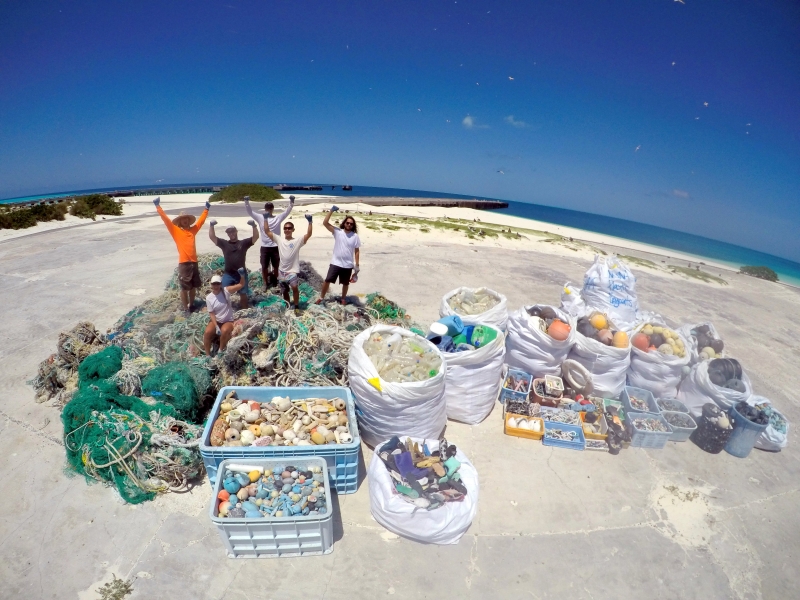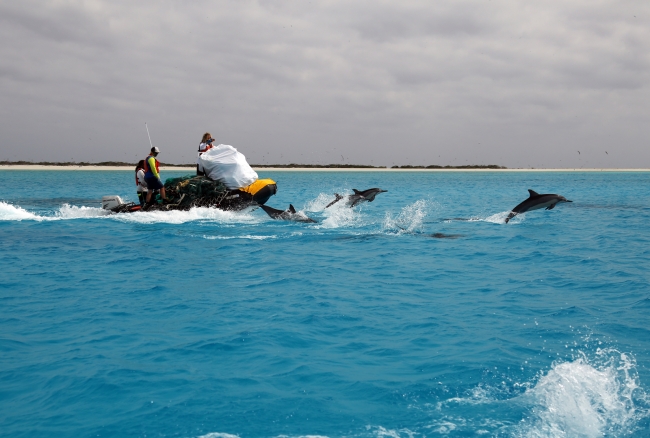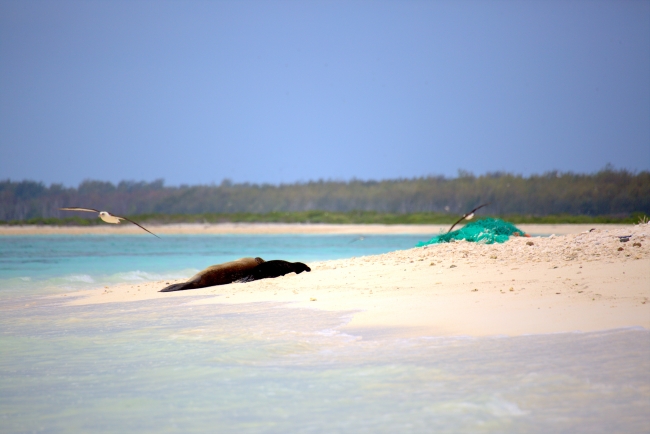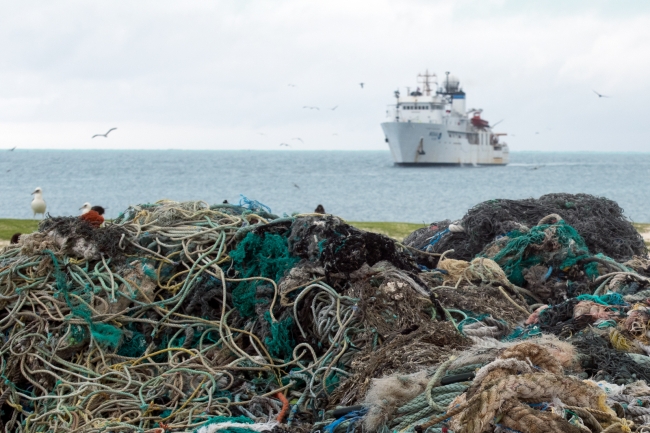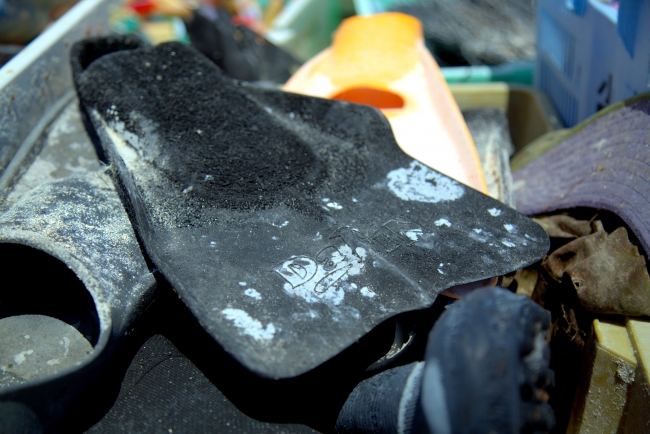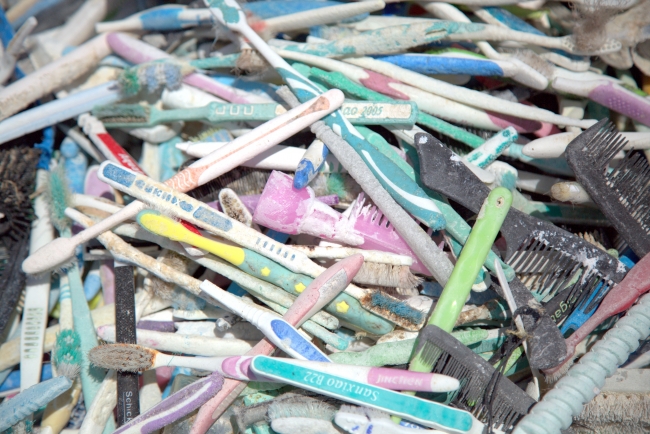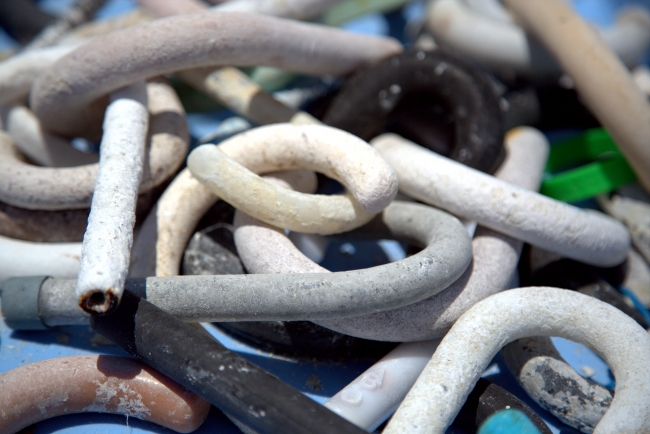By: Ryan Tabata and Rhonda Suka, Guest Bloggers and Scientists with the NOAA Coral Reef Ecosystem Program
The NOAA Pacific Islands Fisheries Science Center (PIFSC) Coral Reef Ecosystem Program’s (CREP) removal mission in the Northwestern Hawaiian Islands is already half way through! The removal team has finished its work at Midway Atoll and is headed to Kure Atoll for the next phase of the effort. Check us out on Facebook, Twitter, and Instagram for daily updates on this effort, as well as CREP’s interactive daily map.
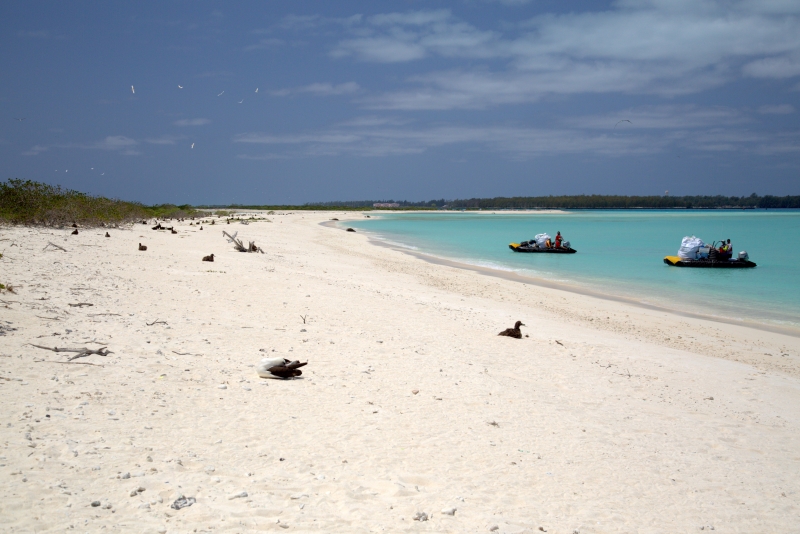
We were greeted by Bonin Petrels flying in the night like shooting stars and were shuttled in stretch limo golf carts to our rooms. The following morning, a brilliant orange sunrise unveiled all that is Midway Atoll National Wildlife Refuge. The air was dense with the calls of millions of nesting seabirds; the fuzzy brown Laysan Albatross chicks were begging for food between the elaborate dances of the adult birds.
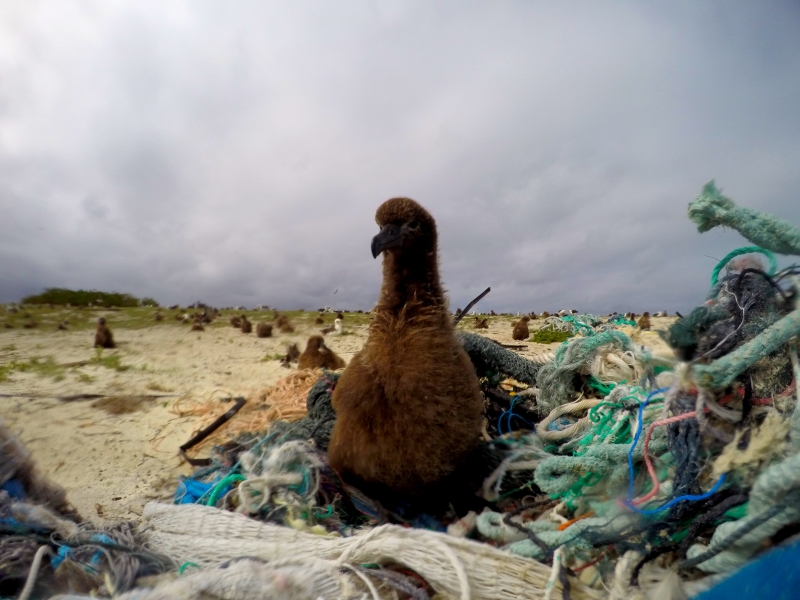
This year, Midway Atoll National Wildlife Refuge is one of the locations where the NOAA CREP has sent their marine debris team to remove tens of thousands of pounds of debris, funded by the NOAA Marine Debris Program and the NOAA Papahānaumokuākea Marine National Monument. Our first day began with a Laysan Albatross slalom course on bicycles. We dodged the chicks on the ground as swooping adults practiced their crash landing techniques. As we arrived at the boat ramp, we found a cute monk seal snoozing, so we adjusted our plans and launched the boat in an alternate location. Being in a National Wildlife Refuge means we have to change our plans for the sleeping natives. Being so immersed with the local wildlife can have its perks though, and a large pod of spinner dolphins would occasionally play alongside our boat and escort us out of the harbor.
Upon arriving on the powdery white sand beaches, we found fishing nets, floats, and an assortment of plastics that had preceded our arrival. Our hearts sank as we painstakingly removed each piece of debris that had washed ashore on this remote island. Although our muscles ached and faces and lips got charred from the sun, our hearts lightened with each 50 pound bag and 500 pound net that was removed, knowing that we were fortunate enough to find and remove these wildlife entanglement hazards before more damage was caused.
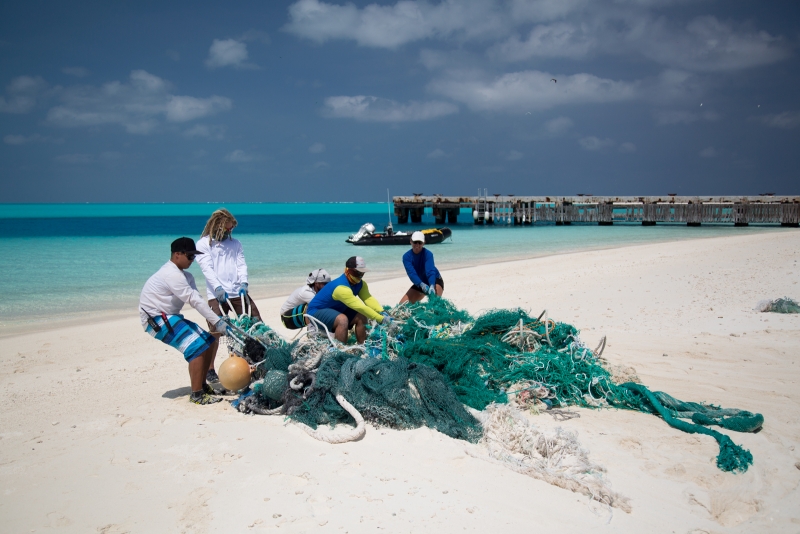
Have you ever lost a shoe, an umbrella, or a baseball? Maybe a water bottle, swim fins, or even a bowling ball? They all float and can all end up on shorelines in faraway places. Midway is 1,300 miles from the nearest city (Honolulu) and has collected debris from across the globe. The most harmful debris are the fishing nets that wash up on the shorelines because they are great at catching monk seals, turtles, sea birds, and sharks. These indiscriminate killers can range from hand-sized fragments to behemoths weighing over 20,000 pounds!
During our eight days of marine debris removal on the beaches of Midway, we collected 15,206 pounds of debris. More than half of that weight was from derelict fishing gear. While the animals may not know why we are stealthily working around them, we are committed to our work, knowing that we can make a difference for the nesting seabirds and 1,300 critically endangered monk seals. Last week we left Midway Atoll National Wildlife Refuge. Our next stops include various islands in the Northwestern Hawaiian Islands to continue our mission. We can all do our part and we hope we have inspired you to make a difference.
